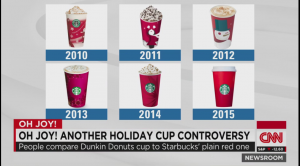By GRACE BERNARD
Early Tuesday morning, ISIS carried out three attacks in Brussels, Belgium. Immediately after, the news media began reporting on the details showing the world how the term “breaking news” is being redefined.
It’s no secret that the technological advances in the last 10 years have had groundbreaking effects on how news outlets function. And it’s even less of a secret that Millennials are glued to their phones.
The news media took note of this fact. And with sales of print news outlets declining, they responded with an increase in revolutionary websites and apps that can be accessed almost anywhere.
The effects of this new industry are obvious. A Millennial myself, I check my phone as soon as I wake up. This morning, I instantly noticed eight CNN notifications on my screen, an immediate signal that a major news story had broken.
At 3:29 a.m., 8:29 a.m. Brussels time, the first notification of a suspected terrorist attack was sent out by CNN to it’s mobile-app subscribers: “There are reports of two explosions at the airport in Brussels, Belgium, according to CNN affiliate VTM.”
According to a TIME report, the attacks occurred around 8 a.m. In less than 30 minutes, the entire world was notified of the actions of one terrorist group.
The live updates didn’t stop there. A number of my mobile notifications were less than one hour apart.
Furthermore, all major news outlets were also reporting on live updates, on-site pictures, videos and interviews to report on the attacks in more detail.
Magazines not typically associated with reporting on serious news stories like Vogue and People made use of the unlimited space offered on the Internet. Both had articles featuring updates of the situation in Brussels.
Social media outlets like Instagram, Twitter, Facebook and Tumblr showed similar responses to those seen in the aftermath of the Paris attacks last year. Most notably, Facebook’s Safety Check feature was once again activated.
The reason that all of these advances in both the immediacy and participation in the notion of breaking news are possible is because of widespread usage and dependence on technology.
Millennials are too often criticized for their dependence on their smartphones and social media. But without these markets they’ve created, these advances would’ve never been made. There simply would’ve been no need.


